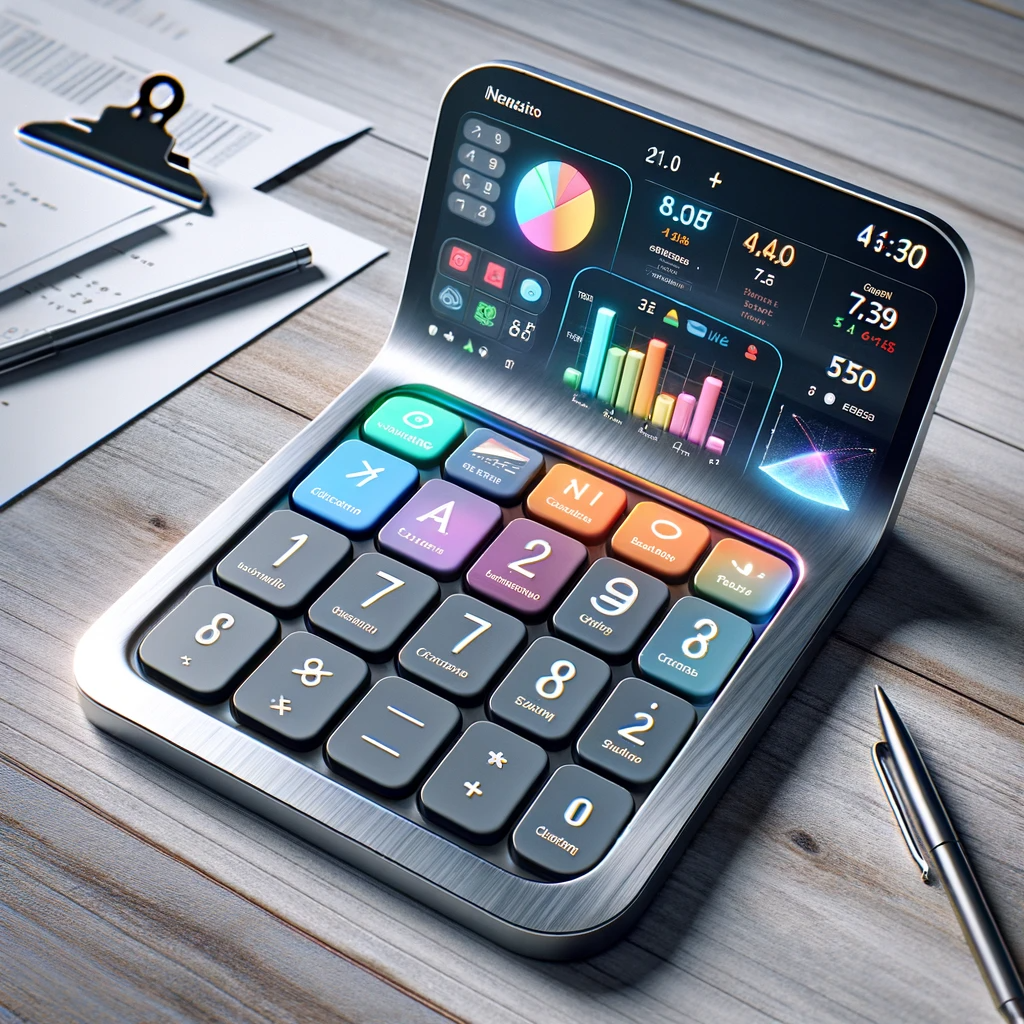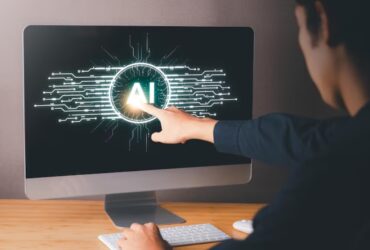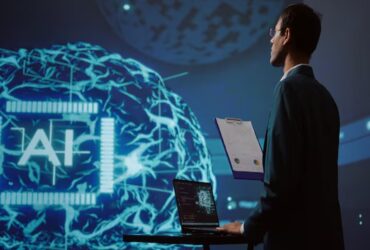No, a calculator is not considered artificial intelligence. While a calculator can perform complex calculations, it operates based on pre-programmed algorithms and rules, without learning or adapting.
In today’s digital age, technology has become an integral part of our daily lives, revolutionizing various aspects of how we live, work, and interact. One of the most significant advancements in technology is the development of artificial intelligence (AI), which has garnered substantial attention and curiosity.
However, many people often wonder about the boundaries of AI and its distinction from other technological tools, such as calculators. We will explore the fundamental differences between a calculator and artificial intelligence, shedding light on their distinct functionalities and capabilities. By the end, you will have a clear understanding of why a calculator is not considered artificial intelligence.
The Evolution Of Calculators
The evolution of calculators has seen significant advancements, but a calculator itself is not considered artificial intelligence. While calculators can perform complex calculations, they lack the ability to learn or adapt like AI systems.
From Abacus To Digital
Calculators have come a long way since the invention of the abacus, which is considered one of the earliest calculating devices. The abacus, with its beads sliding along rods, was used by ancient civilizations to perform basic arithmetic calculations. Fast forward to the digital age, and we now have highly advanced calculators capable of complex mathematical operations. Let’s explore the fascinating journey of calculators as they evolved from simple tools to sophisticated devices.
Incorporating Programmable Features
With the advent of technology, calculators started incorporating programmable features, revolutionizing their functionality. These programmable calculators allowed users to save and execute sequences of mathematical operations, making them more versatile than ever before. This development opened up new possibilities, enabling students, scientists, and professionals to solve complex equations and perform intricate calculations with ease.
The Rise Of Scientific And Graphing Calculators
As demand grew for calculators that could handle scientific and graphing functions, manufacturers introduced specialized models to cater to these needs. Scientific calculators became essential tools for students and professionals in fields such as mathematics, engineering, and physics. These calculators offered advanced functions like trigonometry, logarithms, and exponential calculations, empowering users to solve complex problems efficiently.
Graphing calculators took calculations to the next level by incorporating graphing capabilities, allowing users to visualize mathematical functions and analyze data. These devices became indispensable for students studying calculus, statistics, and other subjects that required graphing and data analysis.
The Integration Of Artificial Intelligence
As technology advanced further, calculators started integrating artificial intelligence (AI) to enhance their capabilities. While traditional calculators were limited to executing predefined operations, AI-powered calculators can now understand and interpret user inputs, providing more accurate and context-specific results. These intelligent calculators can handle complex algebraic expressions, perform unit conversions, and even provide step-by-step solutions to equations.
AI-powered calculators also excel in solving real-world problems, such as financial calculations, optimization, and statistical analysis. By leveraging machine learning algorithms, these calculators continuously learn and improve their performance, adapting to user preferences and delivering personalized results.
The Future Of Calculators
As technology continues to evolve, the future of calculators looks promising. We can expect further advancements in AI integration, making calculators even smarter and more intuitive. With the rise of voice recognition and natural language processing technologies, calculators may become conversational assistants capable of understanding complex spoken queries and providing accurate responses.
Additionally, calculators may embrace cloud computing, allowing users to access vast computational resources on demand. This would enable complex calculations and simulations that were previously limited by the device’s processing power. The future of calculators holds endless possibilities, empowering users with sophisticated tools to tackle the challenges of tomorrow.
Whether you’re using a basic calculator or an AI-powered one, it’s incredible to see how these devices have evolved throughout history. From the humble abacus to the intelligent calculators of today, these tools have undoubtedly transformed the way we approach mathematics and problem-solving. Embracing innovation, calculators continue to play a vital role in education, research, and various industries, enabling us to explore the depths of mathematical possibilities.
Defining Artificial Intelligence
A calculator is not considered artificial intelligence as it operates based on predefined algorithms without learning capabilities. Artificial intelligence refers to machines performing tasks that typically require human intelligence.
Artificial Intelligence (AI) refers to the development of computer systems that can perform tasks that would typically require human intelligence. These systems are designed to analyze, interpret, and learn from data, enabling them to make decisions or take actions without explicit human instructions. AI can be categorized into two types: narrow AI and general AI.
Core Characteristics Of Ai
AI systems possess several core characteristics that distinguish them from traditional automated systems:
- Adaptability: AI systems have the ability to learn and adapt from new information or experiences.
- Complex Decision Making: AI systems can analyze vast amounts of data and make complex decisions based on patterns and algorithms.
- Autonomy: AI systems can operate independently, without constant human intervention, once trained.
- Perception: AI systems can perceive and interpret data from various sources, such as images, text, or audio.
- Problem Solving: AI systems can identify and solve problems by applying logical reasoning and algorithms.
Ai Vs. Automated Systems
While AI may seem similar to automated systems, there are distinct differences:
| AI | Automated Systems |
|---|---|
| AI systems can learn and improve their performance over time. | Automated systems perform repetitive tasks without learning or adapting. |
| AI systems can handle complex and unpredictable scenarios. | Automated systems are designed for specific tasks with predefined instructions. |
| AI systems can make decisions based on data analysis and pattern recognition. | Automated systems follow predetermined rules and instructions. |
While a calculator is not considered AI, it falls under the category of an automated system. Calculators perform predefined operations based on input, without the ability to learn or adapt.
How Calculators Work
Calculators are indispensable tools for performing mathematical calculations with precision and speed. They use a combination of hardware and software to carry out complex mathematical operations. Let’s delve into the inner workings of calculators to understand how they perform these tasks with such efficiency.
Basic Operations And Functions
Basic calculators are designed to perform fundamental mathematical operations such as addition, subtraction, multiplication, and division. These operations are executed through the use of integrated circuits and algorithms programmed into the calculator’s software. When a user inputs numbers and selects the desired operation, the calculator processes the input and displays the result.
Advanced Calculators And Graphing
Advanced calculators, such as scientific and graphing calculators, are equipped with additional functionalities to handle complex mathematical tasks. These calculators can perform advanced operations like trigonometric functions, logarithms, and statistical calculations. Graphing calculators are capable of plotting graphs and analyzing functions, making them valuable tools for students and professionals in fields such as mathematics, engineering, and physics.
Comparing Calculators To AI Systems
Calculators and artificial intelligence (AI) systems are both designed to perform mathematical calculations. However, the capabilities of these two types of systems differ greatly. While calculators are limited to basic arithmetic operations, AI systems are capable of much more. In this section, we will compare the learning capabilities, adaptability, and decision-making abilities of calculators and AI systems.
Learning Capabilities
Calculators are not designed to learn from experience or improve their performance over time. They are pre-programmed with a set of mathematical formulas and algorithms that allow them to perform specific calculations. On the other hand, AI systems are designed to learn from data and improve their performance over time. They use machine learning algorithms to analyze data and identify patterns, which they can then use to make more accurate predictions or decisions.
Adaptability And Decision-making
Calculators are not adaptable and cannot make decisions on their own. They are only capable of performing the calculations they were designed for. AI systems, on the other hand, are highly adaptable and can make decisions on their own based on the data they have analyzed. They can adjust their algorithms and models based on new data and feedback, which allows them to improve their performance over time.
In conclusion, while calculators and AI systems may both be used for mathematical calculations, they differ greatly in their capabilities. Calculators are limited to basic arithmetic operations and are not adaptable or capable of learning. AI systems, on the other hand, are highly adaptable, capable of learning, and can make decisions on their own based on the data they have analyzed.
Exploring Smart Calculators
Integration With AI Technology
Smart calculators are integrating with AI technology to enhance their capabilities. Artificial intelligence algorithms are being utilized to provide advanced functionalities such as natural language processing, predictive analysis, and personalized recommendations.
Examples In The Market
Several smart calculators have emerged in the market that leverage AI technology. For instance, the Casio ClassPad II series and the Texas Instruments TI-Nspire CX II-T CAS are equipped with AI-powered features that enable them to perform complex computations and provide interactive learning experiences.
Future Of Calculators And AI
Calculators are not considered artificial intelligence as they follow predefined algorithms. However, with advancements in AI technology, future calculators may incorporate AI features for enhanced functionality and personalized user experiences. AI-powered calculators could revolutionize problem-solving and streamline complex calculations with intuitive interfaces.
Potential Developments
The future of calculators and AI holds immense potential for development. With advancements in technology, calculators are no longer limited to basic arithmetic functions. They are now equipped with artificial intelligence capabilities that enable them to perform complex calculations, analyze data, and provide intelligent solutions. The integration of AI into calculators opens up a world of possibilities, making them smarter and more efficient than ever before.
One potential development is the incorporation of natural language processing (NLP) into calculators. This would allow users to interact with calculators using everyday language, making calculations more intuitive and user-friendly. Instead of typing or inputting equations, users could simply speak or type a question, and the calculator would understand and provide the desired result. This advancement would greatly enhance the accessibility and usability of calculators, making them more accessible to a wider range of users.
Another potential development is the integration of machine learning algorithms into calculators. With machine learning capabilities, calculators could learn from user inputs and adapt their calculations based on patterns and trends. This would enable calculators to provide more accurate and personalized results, tailored to the specific needs and preferences of each user. For example, a calculator could learn a user’s preferred formatting style or commonly used equations, and automatically apply them in future calculations.
Impact On Education And Professions
The integration of AI into calculators has the potential to revolutionize education and professions that rely heavily on calculations. In education, AI-powered calculators can serve as powerful learning tools, helping students understand complex mathematical concepts and providing step-by-step explanations for calculations. This would not only enhance students’ understanding of mathematics but also improve their problem-solving skills.
In professions such as finance, engineering, and science, AI-powered calculators can streamline and automate complex calculations, saving time and reducing the risk of errors. These calculators can handle large datasets, perform complex statistical analyses, and provide accurate predictions. This allows professionals to focus on higher-level tasks and decision-making, rather than getting bogged down by repetitive calculations.
Moreover, AI-powered calculators can also assist professionals in decision-making by providing real-time insights and recommendations. For example, in financial analysis, a calculator equipped with AI can analyze market trends, evaluate investment opportunities, and suggest optimal strategies. This not only increases efficiency but also enables professionals to make more informed decisions based on data-driven insights.
In conclusion, the future of calculators and AI is promising. With potential developments such as natural language processing and machine learning, calculators are becoming smarter and more intuitive. This has a significant impact on education and professions, enhancing learning experiences and improving efficiency in complex calculations. As technology continues to advance, we can expect calculators to play an increasingly important role in our lives, making complex calculations more accessible and accurate than ever before.

Credit: epiren.medium.com
Frequently Asked Questions
Is A Calculator An Example Of Artificial Intelligence?
No, a calculator is not an example of artificial intelligence. It performs predefined functions based on user input.
Can A Calculator Be Programmed With AI?
Yes, modern calculators can be programmed with AI to perform more advanced functions and provide personalized results.
How Does A Calculator Differ From AI Technology?
A calculator is limited to performing specific mathematical operations, while AI technology can learn, adapt, and make decisions based on data.
Will Calculators Be Replaced By AI In The Future?
It is unlikely that calculators will be completely replaced by AI, as they serve different purposes and have different levels of complexity.
What Are Some Examples Of AI-Powered Calculators?
Examples of AI-powered calculators include Microsoft Math Solver, Wolfram Alpha, and Photomath, which use AI to solve complex math problems and provide step-by-step solutions.
Conclusion
In essence, while a calculator may seem like artificial intelligence, its functions are pre-programmed. True AI learns and adapts. So, no, a calculator is not AI. Understanding the distinction is crucial in the evolving tech landscape. Let’s embrace AI’s potential while appreciating the simplicity of calculators.












































Leave a Reply